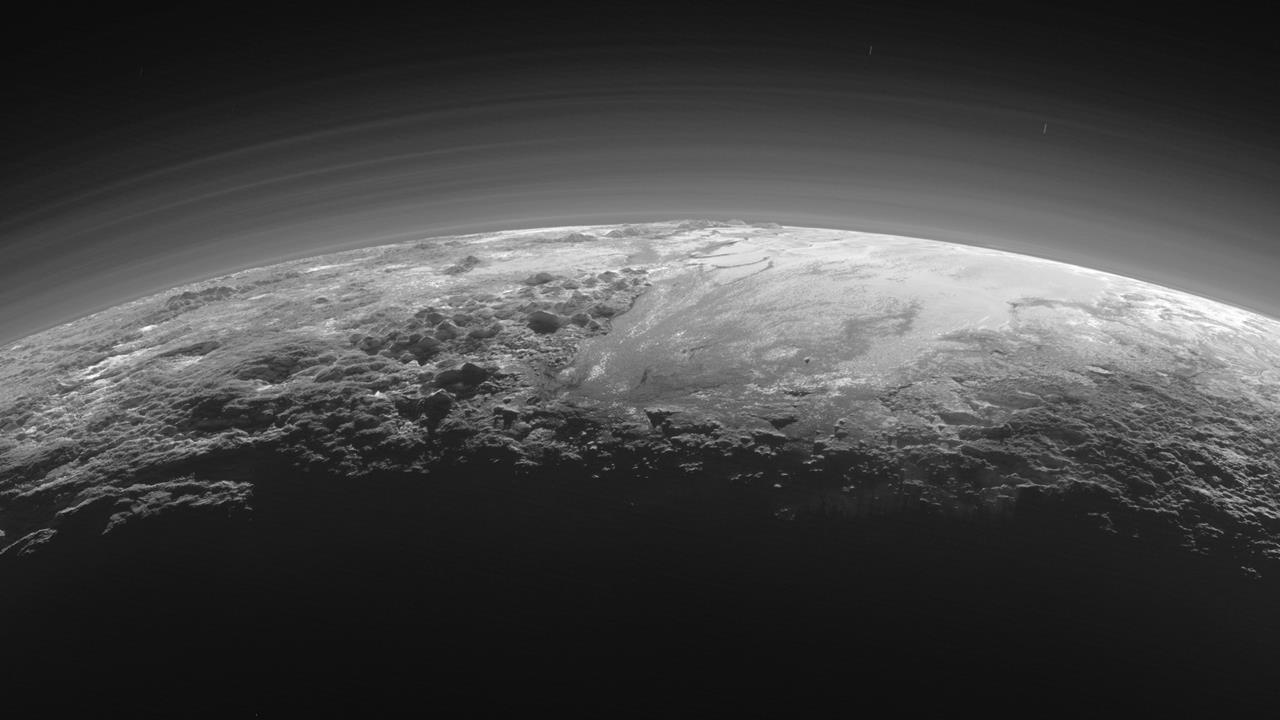The gas composition of a planet’s atmosphere generally determines how much heat gets trapped in the atmosphere. For the dwarf planet Pluto, however, the predicted temperature based on the composition of its atmosphere was much higher than actual measurements taken by New Horizons spacecraft in 2015.
A new study proposes a novel cooling mechanism controlled by haze particles to account for Pluto’s frigid atmosphere, according to Science Daily.
“It’s been a mystery since we first got the temperature data from New Horizons,” said first author Xi Zhang, assistant professor. “Pluto is the first planetary body we know of where the atmospheric energy budget is dominated by solid-phase haze particles instead of by gases.”
The cooling mechanism involves the absorption of heat by the haze particles, which then emit infrared radiation, cooling the atmosphere by radiating energy into space. The result is an atmospheric temperature of about 70 Kelvin (minus 203 degrees Celsius, or minus 333 degrees Fahrenheit), instead of the predicted 100 Kelvin (minus 173 Celsius, or minus 280 degrees Fahrenheit).
According to Zhang, the excess infrared radiation from haze particles in Pluto’s atmosphere should be detectable by Space Telescope, allowing confirmation of his team’s hypothesis after the telescope’s planned launch in 2019.
Extensive layers of atmospheric haze can be seen in images of Pluto taken by New Horizons. The haze results from chemical reactions in the upper atmosphere, where ultraviolet radiation from the sun ionizes nitrogen and methane, which react to form tiny hydrocarbon particles tens of nanometers in diameter. As these tiny particles sink down through the atmosphere, they stick together to form aggregates that grow larger as they descend, eventually settling onto the surface.
“We believe these hydrocarbon particles are related to the reddish and brownish stuff seen in images of Pluto’s surface,” Zhang said.
The researchers are interested in studying the effects of haze particles on the atmospheric energy balance of other planetary bodies, such as Neptune’s moon Triton and Saturn’s moon Titan. Their findings may also be relevant to investigations of exoplanets with hazy atmospheres.
N.H.Kh

